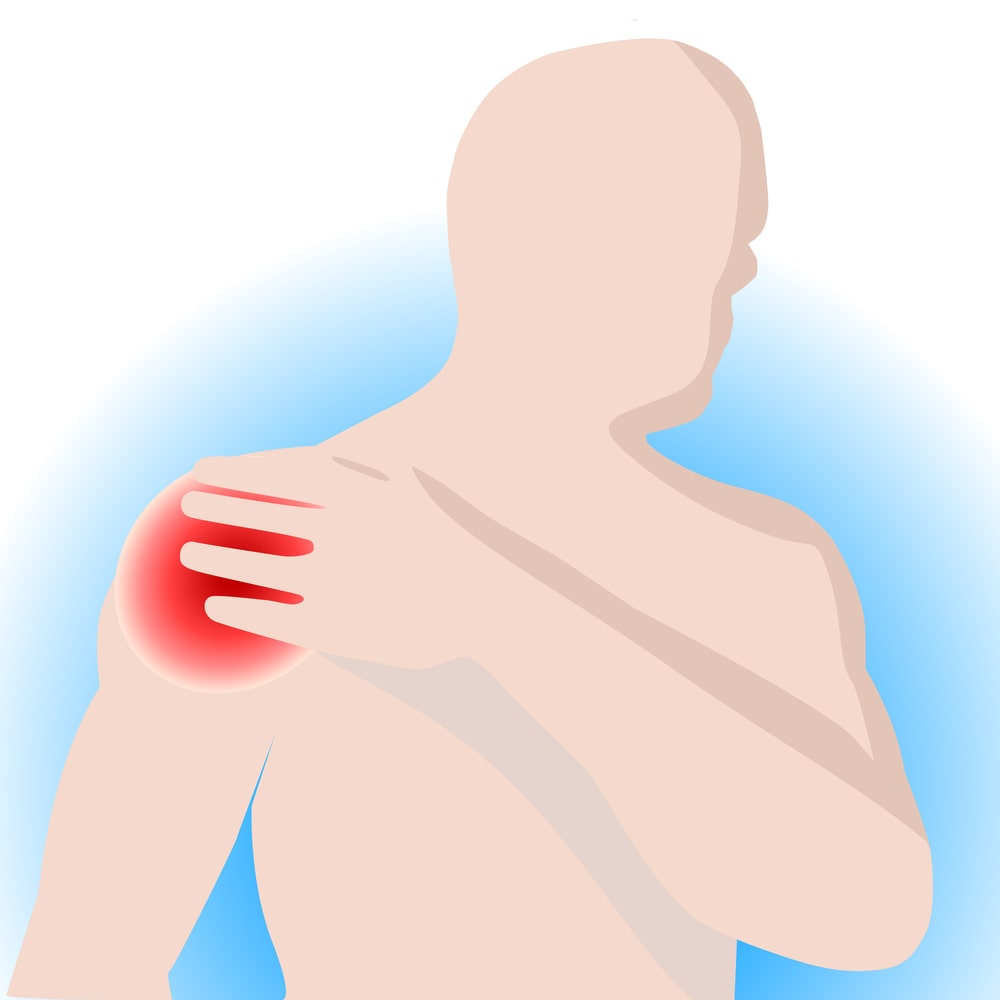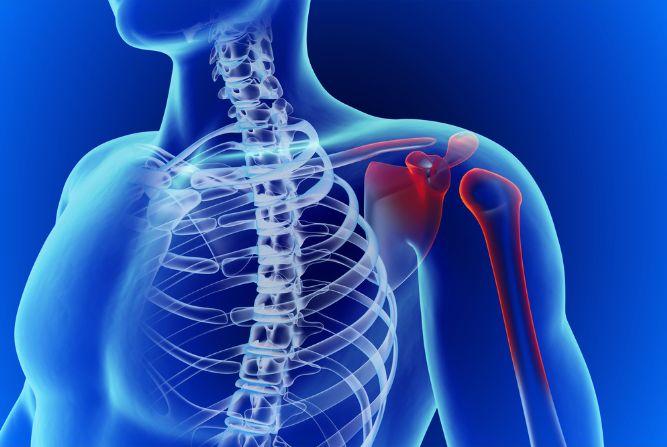You’re lifting the canoe onto your car’s roof rack when you feel it again—that pain and weakness through your shoulder and down your arm. Rubbing your shoulder joint, you wonder what on earth is going on and how you’re going to address it.
If you’re experiencing unexplained pain in your shoulder, neck, arms, or upper back, shoulder bone spurs could be one of the possible culprits. While relatively common, these bony protrusions can significantly impact your daily routine and quality of life.
Fortunately, shoulder bone spurs are treatable in a variety of different ways, depending on their severity and your lifestyle goals. Below, we’ll explore what they are, how they’re diagnosed, and provide an overview of common treatment options.
If you suspect that you may have shoulder bone spurs, making an appointment with your orthopedic surgeon as soon as possible will help you determine the best course of action.
What Are Shoulder Bone Spurs?
Bone spurs (known medically as osteophytes) are bony projections that develop along the edges of bones. Often, they’re small, smooth, and go unnoticed in the body without causing any symptoms. But when bone spurs press or rub against other bones or soft tissues (including ligaments, tendons, and nerves), the results can be painful and seriously impede your day-to-day routine.
Why do bone spurs form? Most often, they develop in response to injury or inflammation in order to protect a joint or area of the body that has been damaged. Unfortunately, they sometimes also cause more damage in the process.
While bone spurs can form in many different parts of the body, including the hips, knees, and spine, the shoulder is one of the most common areas where they often become problematic. When bone spurs form under the acromion (the tip of the outer edge of your shoulder blade or scapula), they can cause significant discomfort and require proactive treatment.
Symptoms of Shoulder Bone Spurs
Because the size, location, and impact of shoulder bone spurs on the body vary from person to person, they can present in a variety of ways. Depending on the circumstances, symptoms of shoulder bone spurs may include one or more of the following:
- Shoulder pain
- Neck pain
- Pain in the upper back or arms
- Tingling or numbness
- Tenderness
- Weakness
- Visible inflammation
- Stiffness
- Muscle spasms
- Decreased range of motion
- A visible lump under the skin (large bone spurs only)
- Tearing of tendons or ligaments (in severe cases)
Causes of Shoulder Bone Spurs
Bone spurs form in response to joint inflammation. But inflammation always has an underlying cause. Underlying causes of bone spurs often include:
- Arthritis (rheumatoid arthritis, osteoarthritis, or degenerative arthritis)—Bone spurs form in response to the breakdown of cartilage at the ends of bones in an attempt to repair the damage.
- Acute injury—Acute shoulder injuries can be caused by direct impact or other damaging incidents.
- Repetitive Injury—People who regularly perform repetitive overhead movements are at risk for the development of shoulder bone spurs along with injury to the rotator cuff tendons.
- Genetics—Patients with a family history of bone spurs (or osteochondromas) may experience shoulder bone spurs more frequently than the general population.
Diagnosis of Shoulder Bone Spurs
Because the symptoms of shoulder bone spurs are varied and often exist within the context of a broader condition or injury, the most conclusive way to diagnose their presence is via a visual confirmation. Bone spurs are often diagnosed by X-ray, MRI, CT scan, or ultrasound. Your orthopedic surgeon will recommend the diagnostic method they believe will be most appropriate for your symptoms and circumstances.
Treatment for Shoulder Bone Spurs
If you’re diagnosed with shoulder bone spurs, your individual treatment plan will take into account your current level of pain, lifestyle, and personal goals. Reducing pain and avoiding future injuries will always be the priority. Your orthopedic surgeon will outline and consider less invasive treatment options before recommending surgery. Ultimately, your preferred course of treatment will be up to you.
Non-Surgical Treatments
In cases with mild symptoms, the following non-surgical treatments may be ideal:
Physical Therapy
A physical therapist can provide an exercise program tailored to your needs in combination with treatments such as deep tissue massage, ultrasound and more. Physical therapy can often drastically reduce the pain associated with shoulder bone spurs. Decreasing the health of the surrounding tissues with stretching and strengthening, can decrease inflammation and therefore pain associated with bone spurs.
Medication
The most common medications associated with the treatment of shoulder bone spurs are over-the-counter anti-inflammatory drugs and pain relievers.
Rest and Lifestyle Modifications
Rest can sometimes work wonders for bone spur pain. Avoiding triggering movements and overuse in your daily life can promote effective healing—even the reabsorption of bone spurs by the body.
Minimally Invasive Procedures
If your body isn’t responding to the simple, non-surgical treatment options listed above, it may be time to consider a minimally invasive procedure.
Corticosteroid Injections
Therapeutic steroid injections can sometimes reduce pain and increase your range of motion.
Arthroscopic Surgery
Arthroscopic surgery for bone spurs in the shoulder joint involves trimming or removing bone spurs to open up space and relieve pressure on bones, ligaments, and tissues.
Surgical Treatments
Open Surgery
Open surgery is typically the last resort and is only considered in severe cases where bone spurs are seriously impacting your quality of life. Surgeries such as subacromial decompression (which can involve removing spurs and thickened ligaments as well as resurfacing shoulder bones) and shoulder arthroplasty (which is a replacement of the shoulder joint) often have excellent outcomes but are major procedures that involve a significant investment of time and require extensive rehabilitation.
Conclusion
To conclude, shoulder bone spurs are a common cause of shoulder pain and discomfort that can range from mild to severe. They typically occur as the result of an underlying cause or condition and require thoughtful and knowledgeable treatment. Consulting with a specialist in sports medicine can provide targeted treatment options tailored to your lifestyle and activity level.
If you’re experiencing shoulder pain and wondering if it could be due to shoulder bone spurs, schedule an appointment with one of the award-winning orthopedic surgeons at Modern Orthopaedics of New Jersey. Our team looks forward to treating you!






